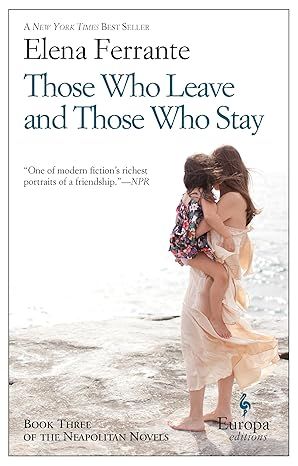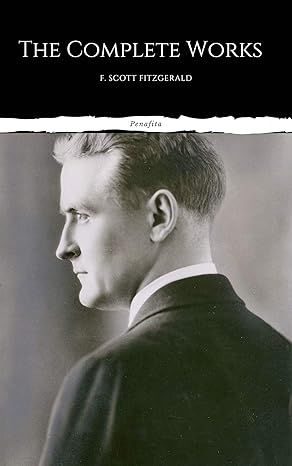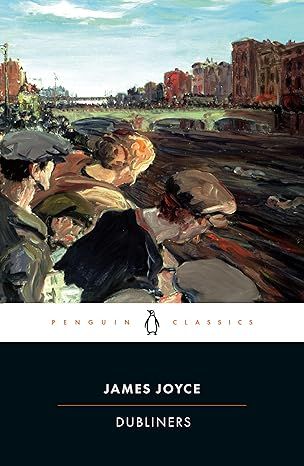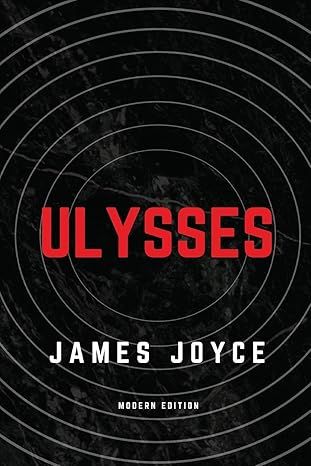The Story of a New Name: A Novel (Neapolitan Novels, 2)
4.5
-
17,407 ratings
A novel in the bestselling quartet about two very different women and their complex friendship: “Everyone should read anything with Ferrante’s name on it” (The Boston Globe).
The follow-up to My Brilliant Friend, The Story of a New Name continues the epic New York Times–bestselling literary quartet that has inspired an HBO series, and returns us to the world of Lila and Elena, who grew up together in post-WWII Naples, Italy.
In The Story of a New Name, Lila has recently married and made her entrée into the family business; Elena, meanwhile, continues her studies and her exploration of the world beyond the neighborhood that she so often finds stifling. Marriage appears to have imprisoned Lila, and the pressure to excel is at times too much for Elena. Yet the two young women share a complex and evolving bond that is central to their emotional lives and a source of strength in the face of life’s challenges. In these Neapolitan Novels, Elena Ferrante, “one of the great novelists of our time” (The New York Times), gives us a poignant and universal story about friendship and belonging, a meditation on love and jealousy, freedom and commitment—at once a masterfully plotted page-turner and an intense, generous-hearted family saga.
“Imagine if Jane Austen got angry and you’ll have some idea of how explosive these works are.”—The Australian
“Brilliant . . . captivating and insightful . . . the richness of her storytelling is likely to please fans of Sara Gruen and Silvia Avallone.”—Booklist (starred review)
Kindle
$3.99
Available instantly
Audiobook
$0.00
with membership trial
Hardcover
$19.68
Paperback
$10.99
Ships from
Amazon.com
Payment
Secure transaction
ISBN-10
1609451341
ISBN-13
978-1609451349
Print length
471 pages
Language
English
Publisher
Europa Editions
Publication date
September 02, 2013
Dimensions
5.3 x 1.8 x 8.2 inches
Item weight
2.31 pounds
Popular highlights in this book
Maybe I should tell her that things without meaning are the most beautiful ones.
Highlighted by 826 Kindle readers
For your whole life you love people and you never really know who they are.
Highlighted by 661 Kindle readers
Product details
ASIN :
B085MRT191
File size :
5577 KB
Text-to-speech :
Enabled
Screen reader :
Supported
Enhanced typesetting :
Enabled
X-Ray :
Not Enabled
Word wise :
Enabled
Editorial reviews
Praise for Elena Ferrante and the Neapolitan Novels
“A large, captivating, amiably peopled bildungsroman.”—James Wood, The New Yorker
“One of modern fiction’s richest portraits of a friendship.”—John Powers, NPR’s Fresh Air
“Elena Ferrante is one of the great novelists of our time.”—Roxana Robinson, The New York Times Book Review
“Compelling, visceral and immediate…The Neapolitan novels are a tour de force.”—Jennifer Gilmore, The Los Angeles Times
“It took my breath away…so honest and right and opens up heart to so much.”—Elizabeth Strout, writer
“The Neapolitan novel cycle is an unconditional masterpiece.”—Jhumpa Lahiri, writer
“Everyone should read anything with Ferrante’s name on it.”—Eugenia Williamson, The Boston Globe
“Ferrante’s own writing has no limits, is willing to take every thought forward to its most radical conclusion and backwards to its most radical birthing.”—The New Yorker
“One of the more nuanced portraits of feminine friendship in recent memory.”—Megan O’Grady, Vogue
“It’s just hypnotic. I could not stop reading it or thinking about it.”—Hillary Clinton
“Ferrante tackles girlhood and friendship with amazing force.”—Gwyneth Paltrow, actor
“Ferrante’s writing seems to say something that hasn’t been said before in a way so compelling its readers forget where they are, abandon friends and disdain sleep.”—Joanna Biggs, The London Review of Books
“Ferrante has written about female identity with a heft and sharpness unmatched by anyone since Doris Lessing.”—Elizabeth Lowry, The Wall Street Journal
“No one has a voice quite like Ferrante’s. Her gritty, ruthlessly frank novels roar off the page with a barbed fury, like an attack that is also a defense...Imagine if Jane Austen got angry and you’ll have some idea of how explosive these works are.”—John Freeman, writer
"When I read the Neapolitan novels I find that I never want to stop.”—Molly Fischer, The New Yorker
“Dazzling...stunning...an extraordinary epic.”—Michiko Kakutani, The New York Times
“Spectacular.”—Maureen Corrigan, NPR’s Fresh Air
“What words do you save? Here’s your chance to bring them out, like the silver for the wedding of the first-born: genius, tour de force, masterpiece. They apply to the work of Elena Ferrante…her magnificent Neapolitan quartet seems to me to be the greatest achievement in fiction of the post-war era.”—Charles Finch, The Chicago Tribune
“We are dealing with masterpieces here, old-fashioned classics, filled with passion and pathos…The sheer power of her books is a challenge to the chilly, dour craftsmanship of too many 21st century literary novels.”—Joe Klein, TIME Magazine
“The saga is both comfortingly traditional and radically fresh, it gives readers not just what they want, but something more than they didn't know they craved...through this fusion of high and low art, Ms. Ferrante emerges as a 21st-century Dickens.”—The Economist
“Ferrante’s accomplishment in these novels is to extract an enduring masterpiece from dissolving margins, from the commingling of self and other, creator and created, new and old, real and whatever the opposite of real may be…Ferrante’s voice is very much her own, but its force is communal.”—Judith Shulevitz, The Atlantic
“Ferrante adumbrates the mysterious beauty and brutality of personal experience.”—Rachel Cusk, The New York Times Book Review
Read more
Sample
CHAPTER 1
1.
In the spring of 1966, Lila, in a state of great agitation, entrusted to me a metal box that contained eight notebooks. She said that she could no longer keep them at home, she was afraid her husband might read them. I carried off the box without comment, apart from some ironic allusions to the excessive amount of string she had tied around it. At that time our relationship was terrible, but it seemed that only I considered it that way. The rare times we saw each other, she showed no embarrassment, only affection; a hostile word never slipped out.
When she asked me to swear that I wouldn't open the box for any reason, I swore. But as soon as I was on the train I untied the string, took out the notebooks, began to read. It wasn't a diary, although there were detailed accounts of the events of her life, starting with the end of elementary school. Rather, it seemed evidence of a stubborn self-discipline in writing. The pages were full of descriptions: the branch of a tree, the ponds, a stone, a leaf with its white veinings, the pots in the kitchen, the various parts of a coffeemaker, the brazier, the coal and bits of coal, a highly detailed map of the courtyard, the broad avenue of stradone, the rusting iron structure beyond the ponds, the gardens and the church, the cut of the vegetation alongside the railway, the new buildings, her parents' house, the tools her father and her brother used to repair shoes, their gestures when they worked, and above all colors, the colors of every object at different times of the day. But there were not only pages of description. Isolated words appeared, in dialect and in Italian, sometimes circled, without comment. And Latin and Greek translation exercises. And entire passages in English on the neighborhood shops and their wares, on the cart loaded with fruit and vegetables that Enzo Scanno took through the streets every day, leading the mule by the halter. And many observations on the books she read, the films she saw in the church hall. And many of the ideas that she had asserted in the discussions with Pasquale, in the talks she and I used to have. Of course, the progress was sporadic, but whatever Lila captured in writing assumed importance, so that even in the pages written when she was eleven or twelve there was not a single line that sounded childish.
Usually the sentences were extremely precise, the punctuation meticulous, the handwriting elegant, just as Maestra Oliviero had taught us. But at times, as if a drug had flooded her veins, Lila seemed unable to bear the order she had imposed on herself. Everything then became breathless, the sentences took on an overexcited rhythm, the punctuation disappeared. In general it didn't take long for her to return to a clear, easy pace. But it might also happen that she broke off abruptly and filled the rest of the page with little drawings of twisted trees, humped, smoking mountains, grim faces. I was entranced by both the order and the disorder, and the more I read, the more deceived I felt. How much practice there was behind the letter she had sent me on Ischia years earlier: that was why it was so well written. I put everything back in the box, promising myself not to become inquisitive again.
But I soon gave in—the notebooks exuded the force of seduction that Lila had given off since she was a child. She had treated the neighborhood, her family, the Solaras, Stefano, every person or thing with ruthless accuracy. And what to say of the liberty she had taken with me, with what I said, with what I thought, with the people I loved, with my very physical appearance. She had fixed moments that were decisive for her without worrying about anything or anyone. Here vividly was the pleasure she had felt when at ten she wrote her story, The Blue Fairy. Here just as vivid was what she had suffered when our teacher Maestra Oliviero hadn't deigned to say a single word about that story, in fact had ignored it. Here was the suffering and the fury because I had gone to middle school, neglecting her, abandoning her. Here the excitement with which she had learned to repair shoes, the desire to prove herself that had induced her to design new shoes, and the pleasure of completing the first pair with her brother Rino. Here the pain when Fernando, her father, had said that the shoes weren't well made. There was everything, in those pages, but especially hatred for the Solara brothers, the fierce determination with which she had rejected the love of the older, Marcello, and the moment when she had decided, instead, to marry the gentle Stefano Carracci, the grocer, who out of love had wanted to buy the first pair of shoes she had made, vowing that he would keep them forever. Ah, the wonderful moment when, at fifteen, she had felt herself a rich and elegant lady, on the arm of her fiance, who, all because he loved her, had invested a lot of money in her father and brother's shoe business: Cerullo shoes. And how much satisfaction she had felt: the shoes of her imagination in large part realized, a house in the new neighborhood, marriage at sixteen. And what a lavish wedding, how happy she was. Then Marcello Solara, with his brother Michele, had appeared in the middle of the festivities, wearing on his feet the very shoes that her husband had said were so dear to him. Her husband. What sort of man had she married? Now, when it was all over, would the false face be torn off, revealing the horribly true one underneath? Questions, and the facts, without embellishment, of our poverty. I devoted myself to those pages, for days, for weeks. I studied them. I ended up learning by heart the passages I liked, the ones that thrilled me, the ones that hypnotized me, the ones that humiliated me. Behind their naturalness was surely some artifice, but I couldn't discover what it was.
Finally, one evening in November, exasperated, I went out carrying the box. I couldn't stand feeling Lila on me and in me, even now that I was esteemed myself, even now that I had a life outside of Naples. I stopped on the Solferino bridge to look at the lights filtered through a cold mist. I placed the box on the parapet, and pushed it slowly, a little at a time, until it fell into the river, as if it were her, Lila in person, plummeting, with her thoughts, words, the malice with which she struck back at anyone, the way she appropriated me, as she did every person or thing or event or thought that touched her: books and shoes, sweetness and violence, the marriage and the wedding night, the return to the neighborhood in the new role of Signora Raffaella Carracci.
2.
I couldn't believe that Stefano, so kind, so in love, had given Marcello Solara the vestige of the child Lila, the evidence of her work on the shoes she had designed.
Read more
About the authors
Elena Ferrante
Elena Ferrante is the author of seven novels, including four New York Times bestsellers; The Beach at Night, an illustrated book for children; and, Frantumaglia, a collection of letters, literary essays, and interviews. Her fiction has been translated into over forty languages and been shortlisted for the MAN Booker International Prize. In 2016 she was named one of TIME’s most influential people of the year and the New York Times has described her as “one of the great novelists of our time.” Ferrante was born in Naples.
Read more
Reviews
Customer reviews
4.5 out of 5
17,407 global ratings
Peter Anastas
5
There is a knowingness in this novel
Reviewed in the United States on August 16, 2014
Verified Purchase
Here is a taste of Ferrante's "The Story of a New Name": Lena, the narrator, has finally broken away from Naples to become a university student in Pisa. She is reflecting on her relationship with Lila, her closest friend, the one who married at 16 and is now carrying on an affair with Nino, a radical university student, whom Lena first loved:
"Yes, it's Lila who makes writing difficult. My life forces me to imagine what hers would have been if what happened to me had happened to her, what use she would have made of my luck. And her life continuously appears in mine, in the words that I've uttered, in which there's often an echo of hers, in a particular gesture that is an adaptation of a gesture of hers, in my less which is such because of her more, in my more which is the yielding to the force of her less. Not to mention what she never said but let me guess, what I didn't know and read later in her notebooks. Thus the story of the facts has to reckon with filters, deferments, partial truths, half lies: from it comes an arduous measurement of time passed that is based completely on the unreliable measuring device of words."
What's so fascinating to me about this novel is that we are dealing with two brilliant working class women, one of whom, LIla, drops out of high school to marry a man who turns out to be both violent and a criminal, while Lena, breaks away from Lila, their families and their neighborhood against all odds to attend university, going on to a life of academic success and writing. It is Lena who narrates the novel. It is her language, her voice. both objective and intellectually searching, while still deeply immersed in the native dialect, that we hear in the novel.
There is a knowingness in this novel, an inescapable maturity, which you often only find in European fiction. Behind Ferrante there is Moravia, Morante, La Capria, the great Modernist novelist of Naples, and possibly even Pratolini, who wrote so surely about working class life in Florence. But Ferrante is also herself. She writes about women as no Italian novelist since perhaps Grazia Deledda, who won the Nobel Prize in 1926, has written about them. Her psychological acuteness is breathtaking. The third and final volume of the trilogy "Those Who Leave and Those Who Stay," will be released in early September. I can't wait to read it.
Read more
4 people found this helpful
Brian S.
5
Wonderful read
Reviewed in the United States on April 17, 2024
Verified Purchase
The Story of a New Name was a delightful book. It was very well written and extremely readable. I had already read My Brilliant Friend, which was also an excellent book. The Story of a New Name was even better.
PlantBirdWoman
5
The Story of a New Name by Elena Ferrante: A review
Reviewed in the United States on February 16, 2016
Verified Purchase
The Story of a New Name is the second in Elena Ferrante's highly-praised Neapolitan Quartet. In it, we again meet the two friends. Lila and Elena, both born in August 1944 and now in their late teens and early twenties.
By the end of the first book, My Brilliant Friend, teenaged Lila was already married to the wealthy grocer Stefano. Their marriage had continued the neighborhood pattern of rape and beatings. The "brilliant" Lila, who, like Elena, had longed for a different kind of life away from the impoverished neighborhood where they grew up, had escaped the poverty of her childhood in her marriage to Stefano, but she couldn't escape the culture of male domination and physical abuse. That was simply the accepted way of the world.
It was inevitable that the spirited Lila would eventually rebel and seek more from life. The only surprising thing about that was where and from whom she sought that "more."
Elena, meanwhile, with the help and encouragement of her teachers and her own hard work, as well as a little bit of luck, continued her progress through the educational system. She escaped the trap of an early marriage and managed to continue to college, which opened up a whole new world to her.
The story of Elena's first trip away from her neighborhood to go to the college at Pisa brought back some vivid memories for me. I could relate very well to the apprehension and anxiety of a girl who had lived all her life in an insular neighborhood as she struggled to find her way and her place in this new world she had entered. Been there. Done that. Got the tee shirt.
This really is, in so many ways, a heartbreaking story. The barriers that life throws up for these two young women must seem almost unreal to younger women readers living in Western societies today, but their older mothers, aunts, grandmothers can testify that the barriers really did exist and, in all too many instances, still do, even if in modified form.
Elena continues to be the narrator of this story, but her narration is informed by some notebooks of Lila's. Lila had given them to her and pressed her to keep them - but not read them - so that Stefano would not find them. They were notebooks containing her writing about her feelings and experiences from the time of childhood right up through her marriage. Of course, Elena could not resist the temptation of reading them, and so she is able to tell us what Lila was feeling concerning many of the events of both their lives.
The two young women had always been competitive, especially about school, but, as they reach adulthood, they also become competitive about men. They are attracted to the same young man, although Elena denies her attraction. This attraction will have important consequences for their friendship and for their lives.
Throughout these years, the friendship undergoes repeated trials. The lives of the two have diverged in very significant ways and, at times, they are emotionally distant as well as physically distant from each other. But always something brings them back together.
I loved this book. I thought it was even better than My Brilliant Friend. From the very first page of The Story of a New Name I was mesmerized. I would have liked to read the entire book in one sitting, but, unfortunately, life intervened. I had work to do, places to go, appointments to keep, but I always returned to it as soon as I could, because I just couldn't wait to find out what was going to happen next.
My only real problem with the book was one of the same ones I had with the first entry, namely trying to keep the cast of thousands straight! All those confusing names and all those families and their interrelationships. Had the author not again included that index of characters at the beginning as a handy reference, I might have been irretrievably lost.
As it is, I now feel that I know and understand Lila and Elena. The drama of their lives seems so real, so well-written, and so engrossing that one can't help feeling that it must be based upon real life. The author herself is something of a mystery, but she grew up in Naples and it seems likely that she experienced or observed events similar to the ones that she describes in her books.
Or maybe she just has a really vivid imagination.
Read more
17 people found this helpful
Top Elena Ferrante titles
View allSimilar Books
Best sellers
View all
The Tuscan Child
4.2
-
100,022
$8.39
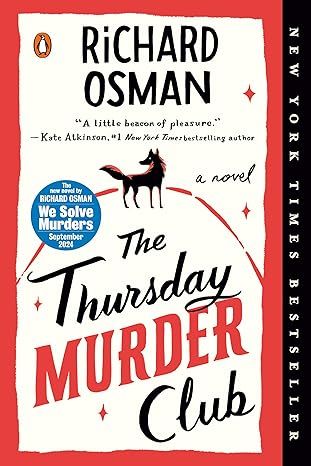
The Thursday Murder Club: A Novel (A Thursday Murder Club Mystery)
4.3
-
155,575
$6.33

Sapiens: A Brief History of Humankind
4.6
-
140,302
$13.49

The Butterfly Garden (The Collector, 1)
4.3
-
88,556
$9.59
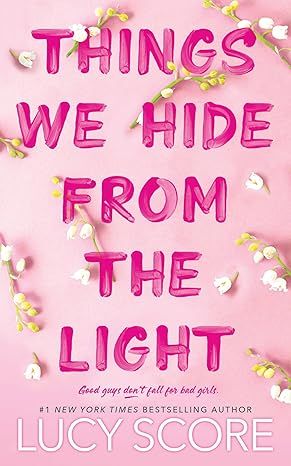
Things We Hide from the Light (Knockemout Series, 2)
4.4
-
94,890
$11.66
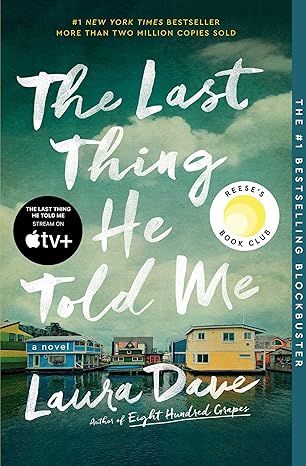
The Last Thing He Told Me: A Novel
4.3
-
154,085
$2.99
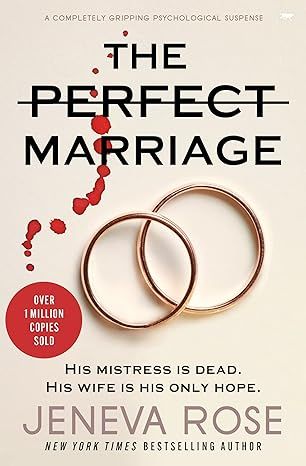
The Perfect Marriage: A Completely Gripping Psychological Suspense
4.3
-
143,196
$9.47

The Coworker
4.1
-
80,003
$13.48

First Lie Wins: A Novel (Random House Large Print)
4.3
-
54,062
$14.99

Mile High (Windy City Series Book 1)
4.4
-
59,745
$16.19

Layla
4.2
-
107,613
$8.99

The Locked Door
4.4
-
94,673
$8.53



